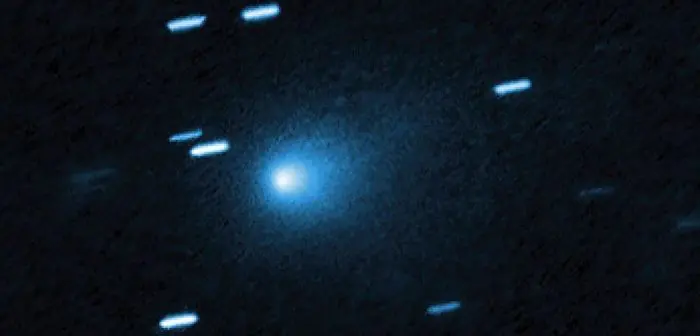
NASA will share later this week new imagery and insights into interstellar comet 3I/ATLAS, the third known object to enter our solar system from beyond the Milky Way.
Hubble recently captured a detailed image of 3I/ATLAS from a distance of 277 million miles, showing the comet wrapped in a teardrop-shaped cloud of dust trailing from its icy nucleus. Discovered on July 1 by the NASA-funded ATLAS survey in Hawaii, the comet poses no threat to Earth and will remain no closer than 170 million miles. It made its nearest approach to Mars in early October, passing within 19 million miles.
Because 3I/ATLAS is an interstellar visitor, it offers scientists a rare chance to study material that formed around another star. NASA’s fleet of spacecraft and observatories provides multiple vantage points, allowing researchers to monitor the comet continuously as it travels through our region of space. Instruments across the solar system, as well as ground-based observatories, are contributing data to help understand its composition, behaviour and how it interacts with the Sun.
The passage of 3I/ATLAS adds a new chapter to the study of interstellar objects, giving scientists another opportunity to investigate material from outside our solar system and compare it with the comets that orbit our Sun.
Image: Hubble captured this image of the interstellar comet 3I/ATLAS on July 21, 2025, when the comet was 277 million miles from Earth. Hubble shows that the comet has a teardrop-shaped cocoon of dust coming off its solid, icy nucleus. Credit: NASA, ESA, David Jewitt (UCLA); Image Processing: Joseph DePasquale (STScI)





